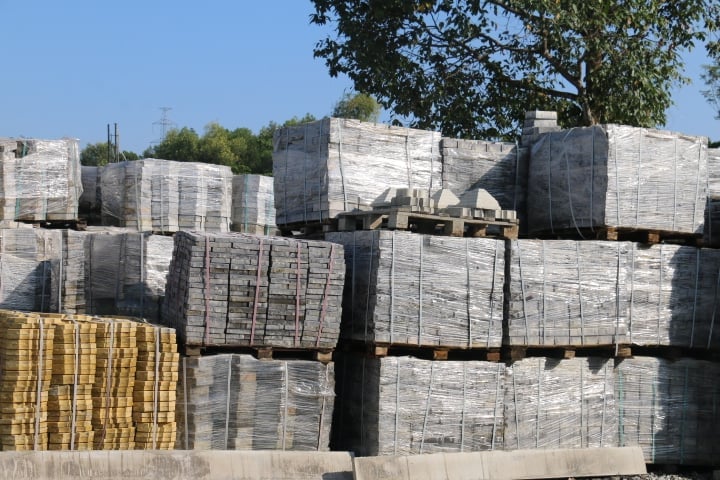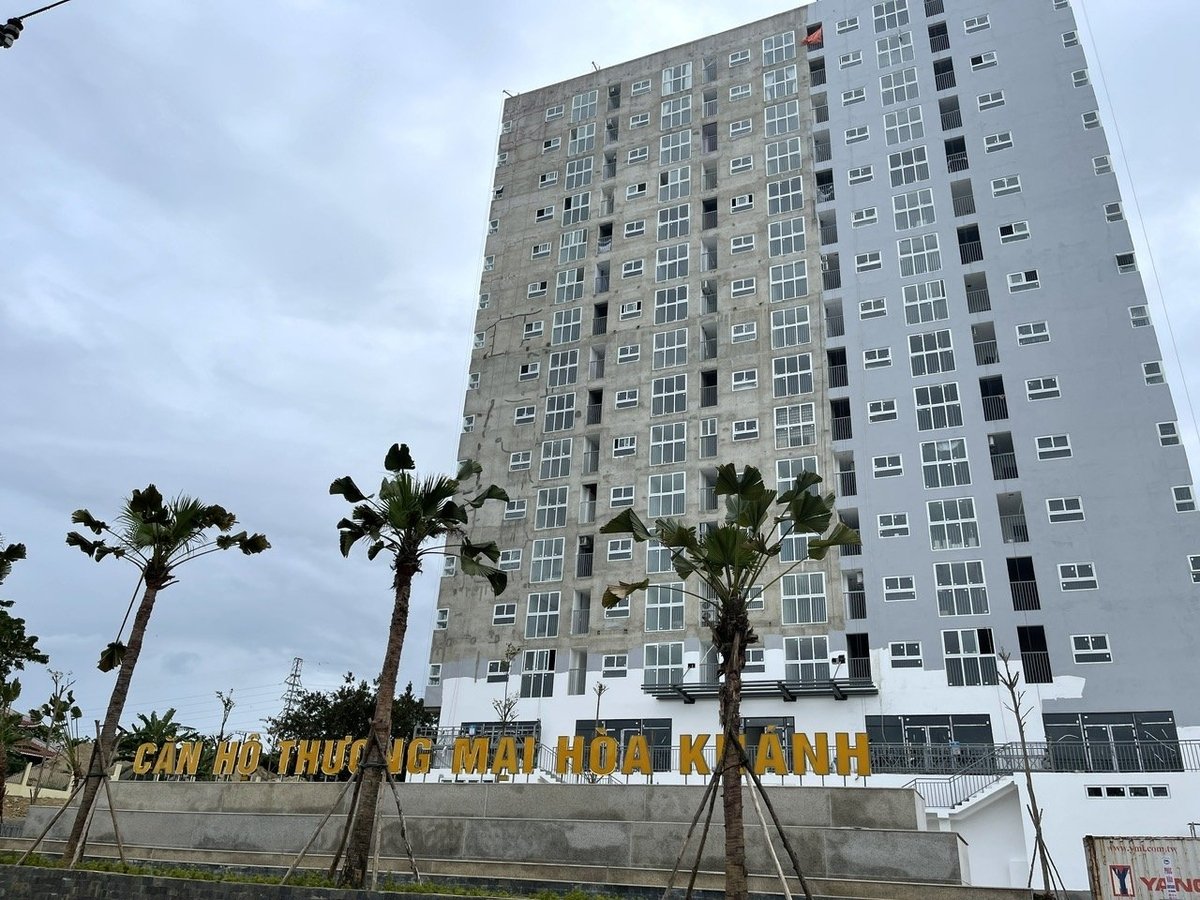December 31, 2025 | 03:16 GMT +7
December 31, 2025 | 03:16 GMT +7
Hotline: 0913.378.918
December 31, 2025 | 03:16 GMT +7
Hotline: 0913.378.918
In recent years, Vietnam has issued numerous policies encouraging the research and application of green materials that save resources and energy and are environmentally friendly. However, the development of green building materials and sustainable construction remains limited.
According to Mr. Nguyen Cuu Loan, Vice Chairman of the Central Vietnam Building Materials Association, the main reason lies in the lack of specific guidelines regarding the procedures and steps for evaluating and certifying energy-saving and eco-friendly building materials. In addition, mandatory regulations related to the assessment and certification of energy performance for construction equipment are still unclear.

Enterprises researching and producing green materials. Photo: Lan Anh.
A significant current barrier is the limited knowledge and experience regarding green building materials. Many investors remain hesitant, partly due to the perception that green construction costs are about 2% higher. Meanwhile, architects struggle to convince investors of the long-term benefits. In reality, incorporating green solutions from the initial design phase does not necessarily increase costs and even reduce investment expenses. Effective green solutions can lead to a return on investment within 2 to 3 years.
“Compared to developed countries, Vietnam’s construction sector, particularly in the central region, remains weak in terms of technology, human resources, and management. No project has yet met Net Zero standards. This poses a major challenge to achieving the goal of net-zero emissions by 2050,” shared Mr. Nguyen Cuu Loan.
Mr. Dang Viet Dung, Chairman of the Vietnam Construction Association, pointed out that the current green building materials market lacks transparency in information and consistency in evaluation standards. Consumers find it difficult to distinguish between genuinely green materials and “greenwashed” products, while manufacturers struggle to demonstrate product quality. As a result, expanding the market remains a significant challenge.

Green materials struggle to find their place in the construction market. Photo: Lan Anh.
“We currently lack regulations aimed at improving the production and use of green materials, as well as sanctions or accountability measures related to environmental protection in the production and use of building materials,” stated Mr. Dang Viet Dung.
In Da Nang, the local government has taken a proactive approach by implementing several policies to promote the development of green materials. Since 2013, 100% of publicly funded construction projects in the city have been required to design, assess, and approve the use of non-fired bricks. The city also encourages the maximum use of non-fired construction materials in all building projects, regardless of funding source or number of floors. As early as 2010, Da Nang eliminated traditional brick kilns, including improved manual kilns, vertical shaft kilns, and ring kilns that used fossil fuels.
According to Mr. Dang Khanh An, Head of the Construction Quality Management Division under Da Nang's Department of Construction, to further enhance the use of green materials in the coming period, the city will continue to promote the development of energy-saving materials and encourage businesses to innovate technology and create materials suited to the local climate.
At the same time, the city recommends that the Ministry of Construction issue a list of certified green and environmentally friendly building materials. This would serve as a guideline for manufacturers, investors, and the public to apply in real construction projects.

Many high-rise residential buildings in Da Nang city have begun using environmentally friendly non-fired bricks. Photo: Lan Anh.
Mr. Dang Viet Dung proposed the need to comprehensively improve economic-technical norms, establish a standardized system for evaluating material quality, and develop consumer protection policies along with financial support for pioneering enterprises in the production and application of green building materials. He also emphasized the importance of prioritizing green materials in public investment projects.
“The most important thing is to have clear policies to strengthen communication on the importance and environmental and health benefits of using green materials. We need to guide consumers on how to recognize green materials and gradually shift their habits away from using traditional, polluting materials,” Mr. Dung suggested.
The development of green buildings is not just a trend but a pressing necessity in the context of climate change and the urgent need to conserve resources. To overcome current barriers, there must be coordinated efforts among regulatory agencies, the business community, architects, construction professionals, and consumers.
When policy, technology, and public awareness advance together, green buildings and materials will no longer be a niche or difficult choice, they will become the standard in the near future.
Translated by Kieu Chi

(VAN) Located in three former provinces, Nam Dinh, Thai Binh, and Ninh Binh, and now in two provinces, Ninh Binh and Hung Yen, "Red River Delta" is the name of Vietnam's first interprovincial coastal wetland World Biosphere Reserve.
/2025/12/29/1046-1-210728_624.jpg)
(VAN) In 2025, Viet Nam recorded severe and extreme disasters, breaking multiple historical records and causing heavy losses in lives, property, and infrastructure nationwide.

(VAN) Applied technologies, water-saving irrigation is a strategic solution to promote climate-resilient agriculture and strengthen water security in the uplands.
/2025/12/29/3936-3-163422_251.jpg)
(VAN) Can Gio mangrove forest in particular and the entire Can Gio Mangrove Biosphere Reserve in general hold great potential for carbon credits.

(VAN) Chu Pah Rubber has announced its products that comply with the EU Deforestation Regulation (EUDR), affirming its commitment to sustainable production and product origin transparency.

(VAN) Deputy Director Nguyen Hoai Nam stated that a digital data platform will be developed with agricultural sector databases, utilizing AI to help farmers make informed decisions on 'watering correctly, sufficiently, and efficiently.’
/2025/12/29/4841-2-134224_777.jpg)
(VAN) From only about 10 individuals in 2009, the wild elephant population in Dong Nai has recovered to nearly 30 animals after more than 10 years.